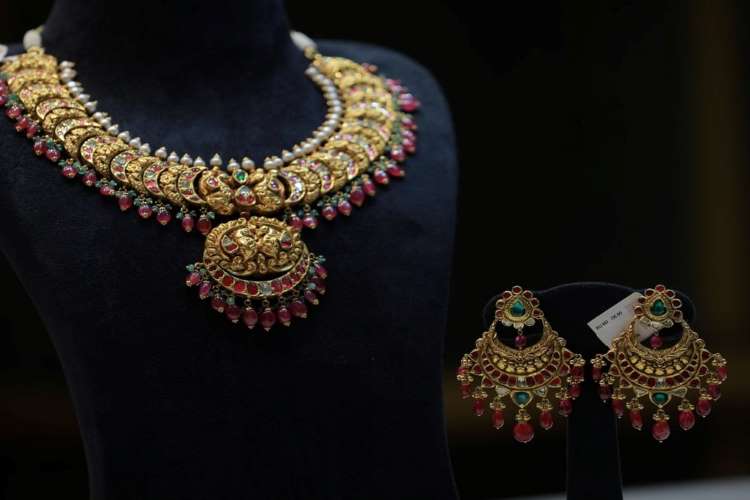
Mandatory hallmarking of gold jewellery: India is a leading consumer and importer of gold. Almost 90% of its demand is met through imports as production of gold is not in proportion with India’s total demand. The yellow metal is cherished by Indians both as an adornment and an investment. World Gold Council estimates that Indian households have accumulated around 25,000 tonne of gold. India has around four lakh jewellers, of which around 35,879 are certified by the Bureau of Indian Standards.
Recently, the department of consumer affairs made hallmarking of gold jewellery mandatory in a phased manner starting from June 16. According to the BIS that operates gold and silver hallmarking scheme in India, hallmarking is defined as the accurate determination and official recording of the proportionate content of precious metal in articles. In short it is a guarantee of certain purity or fineness of the metal to the end consumer.
READ I Proposed amendments will queer the pitch for e-commerce industry
Hallmarking: Origin and types
Hallmarking has been prevalent in the United Kingdom (UK) since ages. To be precise, it dates back to the year 1300 CE when a statute of Edward I instituted the hallmarking system for the protection of the public against fraud and of the trader against unfair competition. It was, in fact, one of the earliest forms of consumer protection. Since its introduction, it has seen multiple changes over centuries and a consolidated version of all the earlier developments on hallmarking was put together as a single legislation in 1973. This legislation, the Hallmarking Act, 1973 is today considered as a modern law regarding the assaying and hallmarking of metals in the UK.
As per the global norm, hallmarking systems fall into three different broad categories. In the first type, the hallmarking processes are owned and operated entirely by the government. Countries such as Bahrain, Egypt, Sri Lanka and Japan follow this system and are particularly well-suited for smaller countries or those with concentrated jewellery markets.
In the second type, the manufacturers themselves are required to perform hallmarking at source and are practiced in countries such as Malaysia, China, Germany and the US. This model is best suited to countries with the capacity to supervise hallmarking centres and jewellery retailers. Robust consumer protection laws and the ability to impose effective deterrents are vital for adopting this model.
The third type, which India has adopted, requires independent licensed private centres to operate as assaying and hallmarking centres. This model is currently practiced in countries such as the UK, Austria, Spain, France, the Netherlands, Hong Kong and Singapore. This model is best suited to countries with high standards of record-keeping and a strong supervisory infrastructure. A combination of free market measures and government initiatives can help to ensure a balance between supply and demand.
READ I BRSR: Indian corporates’ ticket to global leadership
Why mandatory hallmarking?
World over, consumers are cheated with fraudulent jewellery sales since ages and Indian consumers are no exception. The country never seriously had a proper quality control system or mandatory hallmarking. The consumers were largely left on their own often resulting in sale of substandard final product, causing significant monetary loss to the consumers, to the economy and also affecting the reputation of Indian gold in global market. Currently, the country exports gold amounting to around USD 8-9 billion. This could increase to five times the size, according to World Gold Council, if global markets had more faith in the integrity of Indian jewellery.
Now that the gold prices are at an all-time high and people are more interested in investing in gold during the ongoing pandemic, fraudulent activities while dealing with this metal will only further aggravate as rise in demand offer significant scope for fraud and lucrative gain.
A mandatory hallmarking system is expected to curtail the fraudulent activities in the market to a considerable extent and help drive demand for India gold both locally and internationally. Besides, as hallmarking becomes more widespread across the country it would help generate more employment opportunity within the sector.
Moreover, through adopting mandatory hallmarking, the BIS is aiming at India becoming a member of the prestigious International Convention on Control and Marking of Precious Metals, 1972 so as to facilitate international trade of gold jewellery. The Convention has created a common market area for articles of precious metals in the member states, and aims at facilitating cross-border trade and securing consumer protection. Currently, 21 countries are members of this convention and if India succeeds in becoming a part of this treaty it would enhance the credibility and acceptance of the gold from India in the international market.
READ I Steel industry must focus on efficient use of co-products
Effective implementation a challenge
Like in most other countries, implementation of the law in India remains a challenge. While policy and standards regarding mandatory hallmarking are detailed and robust, execution of the policy remains to be seen. While the country has rapidly set up 950 hallmarking centres across the country many remains underutilised and understaffed. Besides it remains to be seen whether 950 centres are adequate enough to tackle the load of the entire industry.
Operationally, many centres suffer from low profitability, poor equipment, slack processes, and use low-quality equipment to reduce maintenance costs. From a supervisory perspective, the BIS does not have the track record nor adequately staffed and funded to monitor the functioning of every centre through regular visits andfulfil its role as a regulator effectively. BIS itself is understaffed and therefore wonder how it would monitor the functioning of 945 centres periodically.
The consumer awareness on hallmarking is also very low in India. Efforts need to be taken to boost government involvement in increasing hallmarking awareness, using platforms such as JagoGrahakJago. Campaigns to sensitise people on hallmarking in a way could also help in isolating fake gold sellers. But more importantly, consumers need to be educated to stop going for the lowest price as fraudsters always exploit this greed.
Efforts should also be taken to address the concern of the unorganised jewellers who still contribute a significant share of the market in India. This huge number of unorganised, small, independent jewellers who carry out undocumented sales and are reluctant to formalise their process needs to be encouraged and brought under hallmarking after due consideration to their concerns. Required assistance to shift their unorganised business to a more professional approach would also be a welcome move.
(George Cheriyan is Director and Amit Babu is Programme Associate with CUTS International, a global public policy research and consumer advocacy organisation based in Jaipur.)
George Cheriyan is Director of Centre for Environment and Sustainable Development India, a national NGO in Special Consultative Status with UN-ECOSOC, and accredited with UNEP & UN ESCAP. CESDI is also a member of South Asia Network on SDGs.

